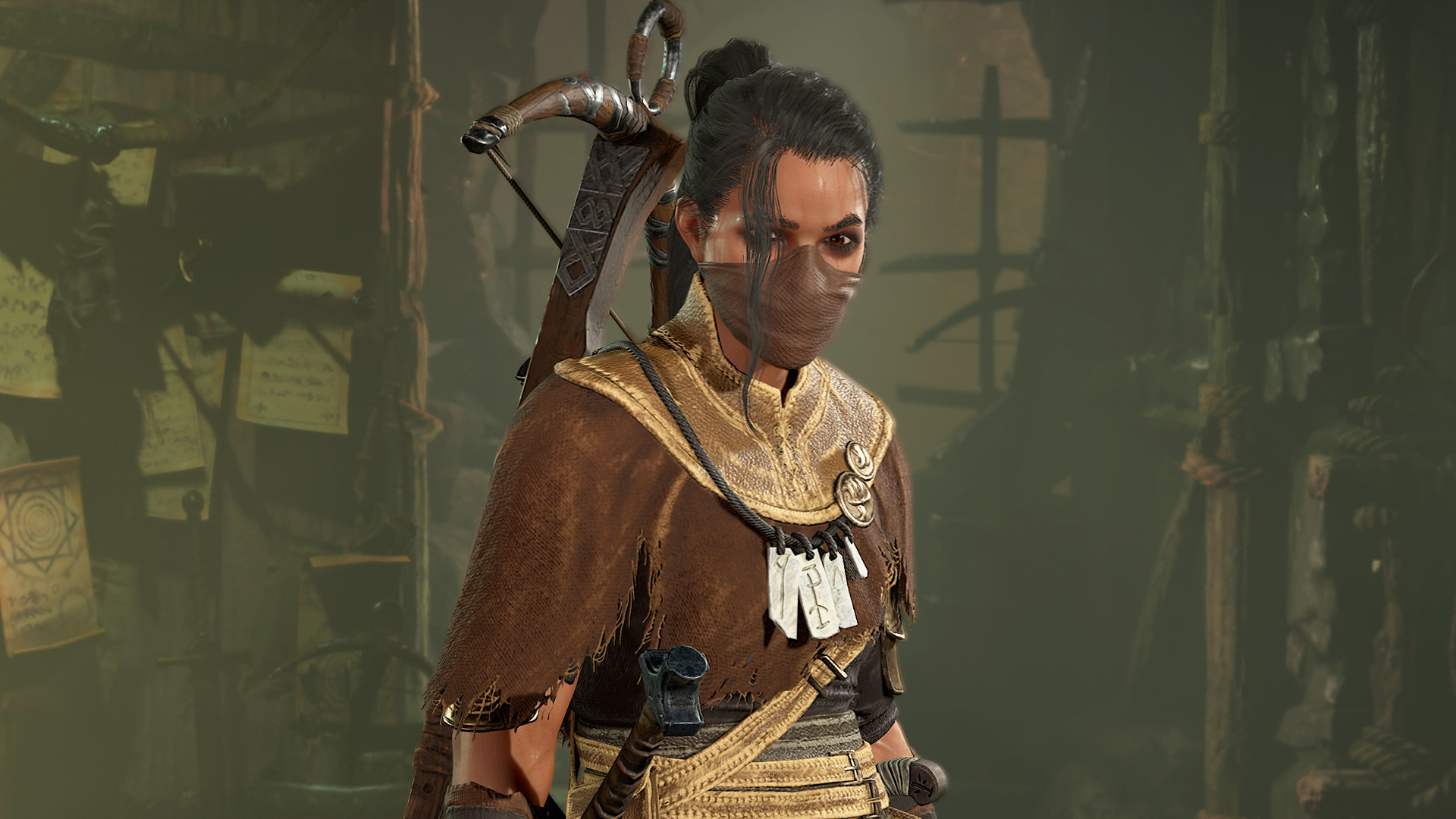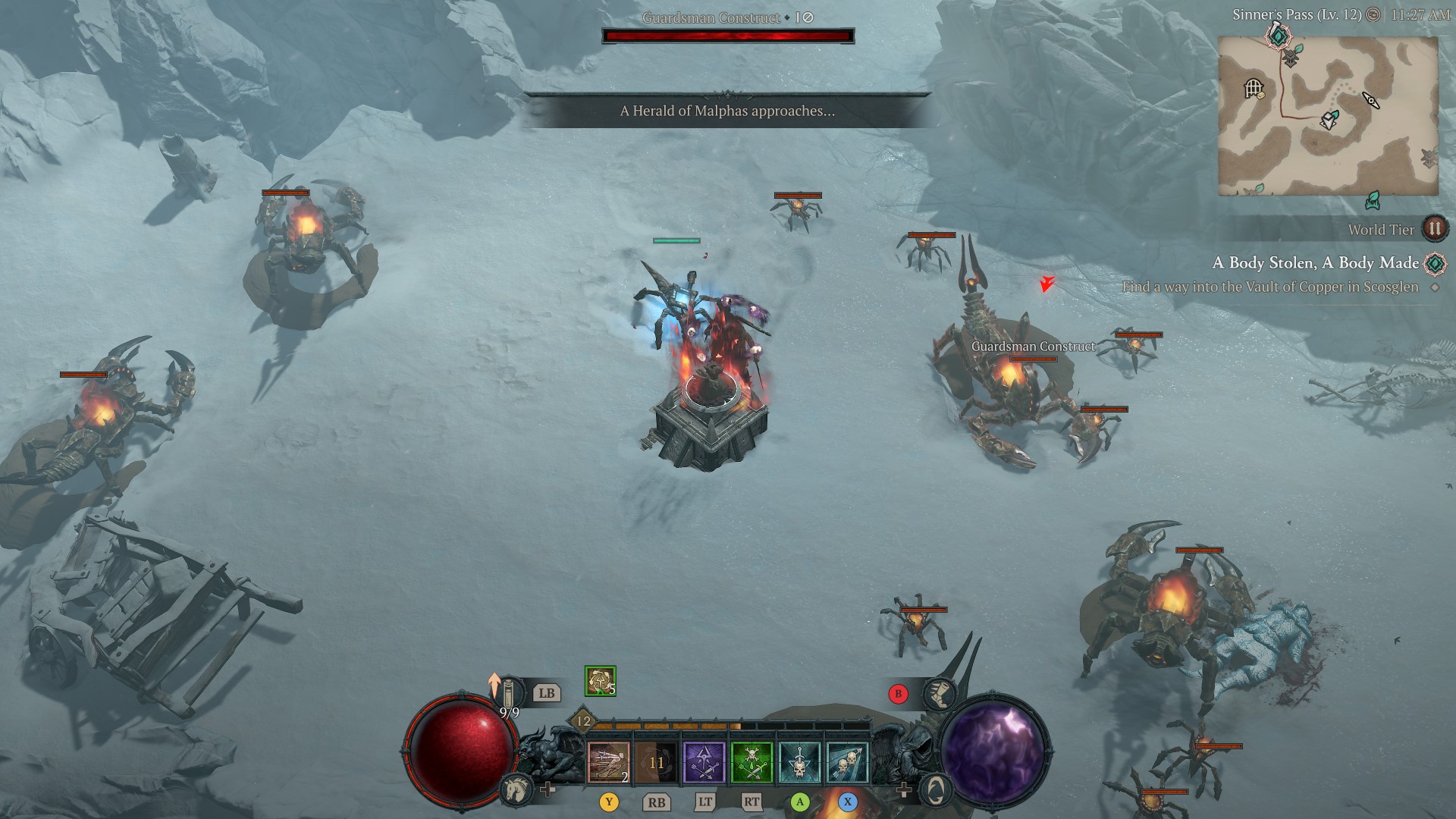The only pal I want is my robot spider in Diablo 4's most challenging season yet
Season 3's traps and new enemy types have me feeling vulnerable again.

Diablo 4's new spider pal may be far more complicated than last season's Vampiric Powers, but I like the change of pace. Season 2 was a critical moment for the game to speed way up and see what happened, and the result was what felt almost like a reboot: a major shift in philosophy for how Diablo 4 is meant to be played. Everywhere you went XP and loot poured out of monsters. It was the easiest the game had been since its launch, but as a result, everything good about it was accessible to everyone.
Season 3 is what happens after seismic changes to the structure of the game have settled in. Blizzard gave its new seasonal features a solid foundation to build off of, which means injecting a little more challenge into this faster, looser Diablo 4.
Indiana rogue
I chose rogue as my starting class for season 3 partly because I wanted to know what it would feel like to rely on the new Seneschal companion. Compared to how swift the start of the leveling journey was in season 2, it's been considerably more perilous for me in season 3. My spider buddy doesn't have the screen-clearing power of some of season 2's early Vampiric Powers. Instead of flushing dungeons of every demon I could see, I've had to thread the needle through the new surprisingly lethal construct enemies and all sorts of deadly traps.
It's a real challenge, but a satisfying one.
The slower pace of the season so far has made combat encounters riskier in a way that has me carefully using skills again. By the end of season 2, almost every class could crush just about anything without thinking about it. The damage output was so high that most of the game became trivial. In the Season of the Construct, enemies send volleys of fireballs at you and traps chunk your health down when you're not expecting it. Careful positioning has become so important that I've fully swapped over to a controller so I can slip through packs of enemies unscathed.
Those playing classes without skills that make you go completely invulnerable will have to wrestle with fighting enemies in between traps. I never expected Diablo to play like a bullet hell shooter, but in the new seasonal dungeons, or vaults, that's basically what happens. Luckily not every room wants to kill you; vaults are mostly normal dungeons which require a little exploring before the objective is revealed to you.
I probably have over 100 hours in this game and I didn't realize how familiar I'd become with the same old dungeon objectives, or how superfluous the fantasy of dungeon crawling had become. While I'm sure vaults will become rote at some point, it's fun to discover new things in dungeons again.
Keep up to date with the most important stories and the best deals, as picked by the PC Gamer team.
Craft your construct

I can't imagine running vaults without my companion: You need enemies distracted as you tip-toe over spiked floor panels and squeeze yourself in between pillars of fire. The Season of the Construct isn't playing around with environmental hazards and, at times, I almost wish I was back on Sorcerer to teleport past the worst of them. The Seneschal comes in clutch to tee up enemies for the few seconds you have to actually attack them, by either weakening them to your attacks or damaging enemies itself. Alternatively, you can have it equipped to drop a protective barrier on you, but I've yet to find a reason to use that over anything else.
All of your spider friend's powers come from governing and tuning stones you can loot off of construct enemies in the open world or at the end of vaults. It starts with a simple lightning bolt that you can augment to deal damage over time or stun enemies, but eventually you start acquiring skills that help you clear out large packs of enemies.
Few of its skills feel specifically designed for one build or playstyle, which encourages you to experiment in a way that the Vampiric Powers didn't. There's way more to chew on with customizable skills than one big power that gives you a lot of attack speed.
It's way too early to tell if the Seneschal will explode in power once I reach the beginning of Diablo 4's endgame at level 50. So far, I appreciate that it isn't playing the game for me, but also isn't so inconsistent that I completely ignore it. My build revolves around one big arrow that pierces enemies, and it can be a pain to clean up stragglers. The Seneschal is perfect for dealing with tiny inefficiencies like that so you can keep moving at all times.

Once I break into the higher levels, I want to see what parts of my build I can offload to the Seneschal. Some of the stones that Blizzard teased have the ability to group enemies up into a convenient pile for my arrows, something you previously had to wear a whole Unique helmet for. My hope is that my robot spider can open up more opportunities to try different items to pair with my build, like maybe the new gloves that transform basic abilities—the resource generator skills that most people only use one of—into devastating attacks with 200% increased damage.
The Season of the Construct isn't as flashy as season 2, but it's a confirmation that the work Blizzard did last year paid off. Diablo 4 feels great to play and is stuffed with exciting loot and gear to play with. Even with some of the issues that remain in the game, like useless stats on items and limited stash space, season 3 gives me hope that further iterations will only make the game better now that it seems like it finally has everything figured out.
Tyler has covered videogames and PC hardware for 15 years. He regularly spends time playing and reporting on games like Diablo 4, Elden Ring, Overwatch 2, and Final Fantasy 14. While his specialty is in action RPGs and MMOs, he's driven to cover all sorts of games whether they're broken, beautiful, or bizarre.

